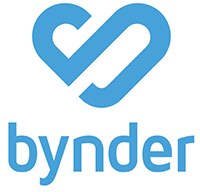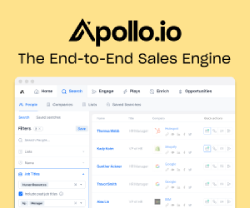
Bynder is a leading digital asset management (DAM) platform designed to help organizations efficiently manage, distribute, and collaborate on digital content. Established in 2013 and headquartered in Amsterdam, Bynder serves a diverse range of industries, including marketing, fashion, retail, and more. The platform is recognized for its intuitive user interface, robust feature set, and ability to streamline digital workflows, making it a popular choice for large enterprises and creative teams.
Key Features:
-
Digital Asset Management (DAM): Bynder’s core functionality revolves around DAM, offering a centralized repository for all digital assets like images, videos, and documents. It provides powerful search capabilities, automated metadata tagging, and advanced file conversion, enhancing the organization and retrieval of digital content.
-
Creative Workflow: This module supports the entire creative process from ideation to approval. It integrates various stages of content creation, facilitating collaboration through briefings, proofs, and feedback loops, which are all managed within a single platform.
-
Brand Guidelines: Bynder allows organizations to create and maintain interactive brand guidelines. This feature ensures brand consistency across all digital assets by providing a dedicated space for branding rules, legal manuals, and marketing processes.
-
Digital and Print Brand Templates: Bynder’s templates empower users to create on-brand content efficiently without needing advanced design skills. This feature is particularly useful for maintaining brand consistency and speeding up the content creation process.
-
Asset Transformation: The Dynamic Asset Transformation (DAT) feature automates asset optimization, linking DAM content to the organization’s tech ecosystem. This automation supports various formats and resolutions needed for different platforms.
-
Content Workflow: This module organizes and manages large volumes of written content. It streamlines the production of articles, blogs, and marketing campaigns by automating and tracking the progress through various stages of creation.
-
Studio: Bynder’s Studio feature enables rapid creation of branded content, including images, videos, and GIFs. It is designed to facilitate quick content production, allowing teams to respond swiftly to market demands.
-
Analytics: Bynder Analytics provides insights into the usage and performance of digital assets. It features dashboards that offer an overview of traffic, user activity, and content performance, supporting data-driven decisions.
-
Integrations: Bynder integrates with a wide range of tools and platforms, including Adobe Creative Cloud, Microsoft Office, and various CMS systems. Its API allows for custom integrations, making it adaptable to different workflows and technical environments.
-
Mobile Access: Bynder supports mobile access, enabling users to manage and interact with digital assets on the go. This feature enhances flexibility and ensures that content can be accessed and edited anytime, anywhere.
-
Security and Permissions: Bynder employs robust security measures, including customizable user permissions and role-based access controls. This ensures that digital assets are securely managed and accessible only to authorized users.
-
Collaboration Tools: The platform includes features for real-time collaboration, allowing teams to work together on asset development and approval. This enhances efficiency and ensures timely delivery of content.
Ease of Use and Support: Bynder is known for its user-friendly interface and drag-and-drop functionality, making it accessible even for non-technical users. The platform also offers comprehensive customer support, including documentation, webinars, and live chat, although some users report challenges with response times during peak periods.












